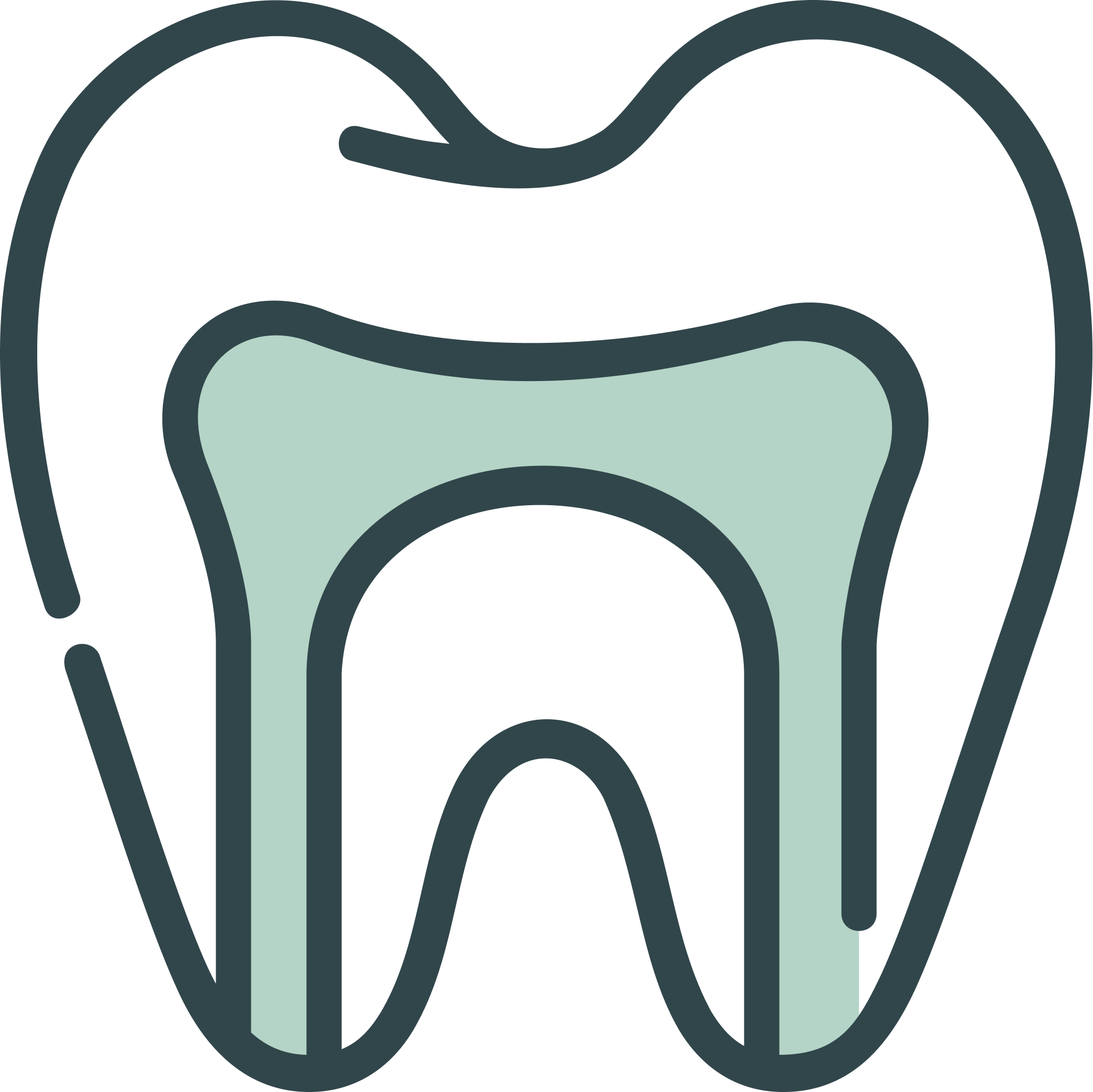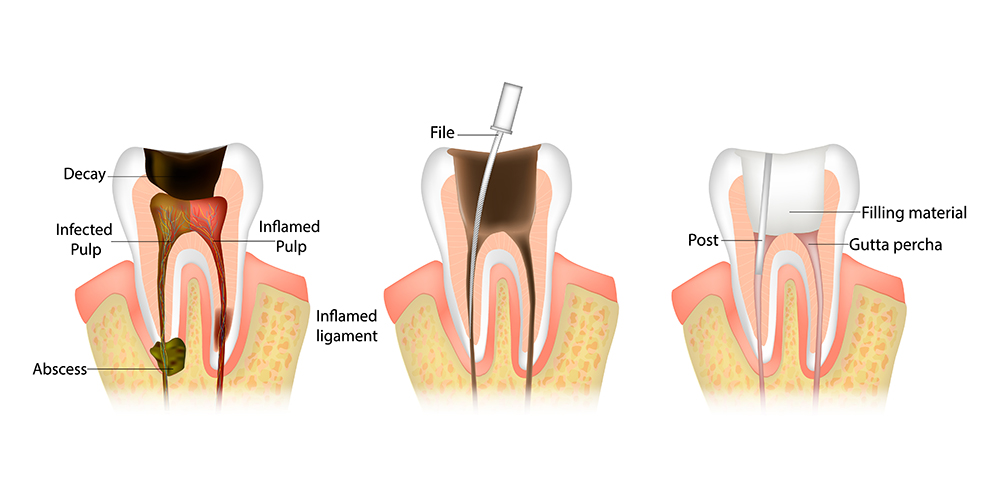Root Canal Treatment at LaPointe Famly Dentistry

What is a Root Canal?
How Root Canal Treatments Work
Tooth anatomy
Your teeth have several layers. The outer layer is the hard enamel, beneath which lies the dentin. At the center of each tooth is the pulp chamber, which contains the tooth's nerve, blood vessels, and connective tissues. This pulp extends down through root canals into the roots of your teeth.
When the pulp becomes infected, inflamed, or dies due to decay, trauma, or other factors, it can cause severe pain and lead to abscess formation. Without treatment, the infection can spread, potentially causing more serious health complications and ultimately requiring tooth extraction.

The Extraction PrSymptoms That May Indicate Need for Root Canal Treatment
During your examination at LaPointe Family Dentistry, Dr. LaPointe will look for several signs that might indicate the need for endodontic treatment:
Severe Toothache:
Persistent, throbbing pain that may worsen when you bite down or apply pressure to the tooth.
Temperature Sensitivity: Prolonged sensitivity to hot or cold temperatures that lingers after the stimulus is removed.
Discoloration: Darkening or discoloration of the tooth, which may indicate that the pulp has died.
Swelling and Tenderness: Swelling in the gums near the affected tooth, sometimes accompanied by a pimple-like bump on the gums.
Persistent Bad Taste: An ongoing bad taste in your mouth or bad breath that doesn't improve with brushing.
Pain When Chewing: Discomfort or pain when chewing or biting down on the affected tooth.
It's important to note that some teeth requiring root canal treatment may not cause any symptoms at all, which is why regular checkups with Dr. LaPointe are so important for early detection.
When Is Root Canal Treatment Needed?
Deep Decay: When cavities are left untreated, bacteria can eventually reach the tooth's pulp, causing infection and inflammation.
Repeated Dental Procedures: Multiple procedures on the same tooth can eventually compromise the pulp, even if each individual treatment was successful.
Trauma or Injury: A blow to the face, sports injury, or accident can damage the pulp, even if there's no visible crack or chip in the tooth.
Large Fillings: Very large fillings can sometimes lead to pulp irritation and eventual infection over time.
Cracked or Chipped Teeth: Cracks in teeth can provide pathways for bacteria to reach the pulp and cause infection.
Diagnosis of Root Canal Problems
Clinical Examination
Dr. LaPointe will begin with a thorough visual examination of the affected tooth and surrounding tissues, looking for signs of infection, swelling, discoloration, or damage. We'll also review your symptoms and dental history in detail.
Percussion and Palpation Tests
Dr. LaPointe may gently tap on the tooth (percussion test) or apply pressure to the surrounding gums (palpation test) to assess your pain response and identify areas of inflammation.
Temperature Testing
We may apply hot or cold stimuli to the tooth to test the vitality of the pulp and determine how the nerve responds to temperature changes.
Electric Pulp Testing
This painless test uses a small electric current to determine if the pulp inside your tooth is alive and healthy. A lack of response may indicate that the pulp has died and root canal treatment is needed.
Digital X-rays
Dr. LaPointe will take detailed X-rays to examine the tooth's root structure, look for signs of infection at the root tips, assess bone levels around the tooth, and check for other potential complications.
Advanced Imaging
In complex cases, Dr. LaPointe may recommend 3D imaging or other advanced diagnostic tools to get a complete picture of the tooth's condition and plan the most effective treatment approach.
Differential Diagnosis
Sometimes, tooth pain can mimic other conditions, such as sinus problems, gum disease, or issues with adjacent teeth. Dr. LaPointe's thorough diagnostic process helps ensure that root canal treatment is indeed the appropriate solution for your specific situation.
Root Canal Process
Initial Consultation and Diagnosis
Dr. LaPointe will examine your tooth, review X-rays, and discuss your symptoms. If root canal treatment is recommended, we'll explain the procedure in detail and answer any questions you may have.
Anesthesia and Comfort
Before beginning treatment, Dr. LaPointe will ensure you're completely comfortable by administering local anesthesia to numb the area around the affected tooth. For anxious patients, LaPointe Family Dentistry also offers additional comfort options to help you relax during the procedure.
Access Opening
Dr. LaPointe will create a small access hole in the crown of the tooth to reach the pulp chamber. For front teeth, this opening is made from the back side, while for back teeth, it's made on the chewing surface.
Pulp Removal and Cleaning
Using specialized instruments, Dr. LaPointe will carefully remove the infected or inflamed pulp from the pulp chamber and root canals. The canals are then shaped and thoroughly cleaned to remove all bacteria and debris.
Disinfection
The cleaned root canals are disinfected with antimicrobial solutions to eliminate any remaining bacteria and reduce the risk of reinfection.
Filling the Canals
Once the canals are completely clean and dry, Dr. LaPointe will fill them with a biocompatible material called gutta-percha, along with a sealing paste. This prevents bacteria from re-entering the tooth.
Temporary Restoration
The access hole is sealed with a temporary filling. In some cases, Dr. LaPointe may place the permanent restoration during the same appointment.
Final Restoration
Most teeth that have undergone root canal treatment will need a crown or other permanent restoration to protect the tooth and restore full function. Dr. LaPointe will discuss the best restoration option for your specific situation.
What to expect after root canal treatment
Immediate Post-Treatment Care
After your root canal procedure at LaPointe Family Dentistry, you may experience some mild discomfort or sensitivity for a few days. This is normal and can typically be managed with over-the-counter pain medications as recommended by Dr. LaPointe.
Healing Timeline
Most patients return to normal activities the day after treatment. Complete healing of the surrounding tissues typically occurs within a few weeks, though the tooth itself is immediately functional once the permanent restoration is placed.
Signs to Watch For
While complications are rare, Dr. LaPointe will provide you with specific instructions about when to contact LaPointe Family Dentistry. You should call if you experience severe pain that doesn't respond to medication, swelling that worsens after a few days, or if your temporary restoration becomes loose or falls out
Follow-Up Care
Dr. LaPointe will schedule follow-up appointments to monitor your healing and place your permanent restoration. Regular checkups are important to ensure the long-term success of your root canal treatment.
Success Rate and Long-Term Outcomes
Factors Affecting
Success
Preventing the Need for a Root Canal
While not all root canal problems can be prevented, Dr. LaPointe recommends several strategies to reduce your risk:
Excellent Oral Hygiene
Brush twice daily with fluoride toothpaste, floss daily, and use an antimicrobial mouthwash to prevent decay and gum disease.
Regular Dental Checkups
Visit LaPointe Family Dentistry every six months for professional cleanings and examinations. Early detection and treatment of problems can prevent them from progressing to the point where root canal treatment is needed.
Protect Your Teeth
Wear a mouthguard during sports, avoid chewing on hard objects like ice or pencils, and don't use your teeth as tools to open packages.
Address Problems Early
Don't ignore tooth pain or sensitivity. Early treatment of cavities and other dental problems can prevent them from progressing to pulp infection.
Healthy Lifestyle Choices
Limit sugary and acidic foods and beverages, avoid tobacco products, and maintain good overall health, as systemic conditions can affect your oral health.
Alternatives to Root Canal Treatment
While root canal treatment is often the best option for saving a natural tooth, Dr. LaPointe will discuss all alternatives with you, including:
Tooth Extraction and Replacement
If the tooth cannot be saved with root canal treatment, extraction followed by replacement with a dental implant, bridge, or partial denture may be recommended.
Pain Management and Comfort
Contrary to popular belief, root canal treatment is typically no more uncomfortable than having a large filling. Dr. LaPointe uses advanced techniques and effective anesthesia to ensure your comfort throughout the procedure.
During Treatment
With proper anesthesia, you should feel little to no discomfort during the actual root canal procedure. You may feel some pressure and vibration, but not pain.
After Treatment
Most patients experience only mild discomfort after treatment, which can be effectively managed with over-the-counter pain relievers. Dr. LaPointe may prescribe stronger medication if needed for your comfort.
important treatment information

Accepting new patients! Most dental insurance plans accepted.
